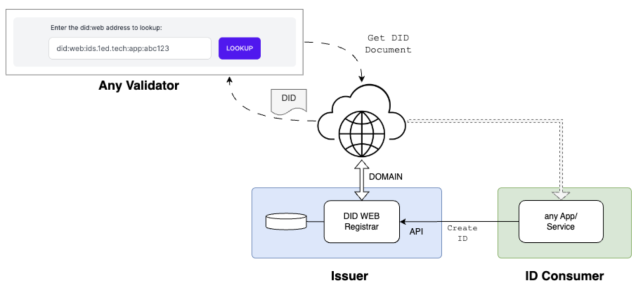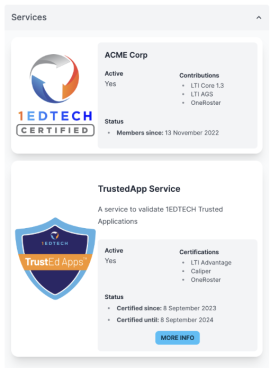Revolutionizing Digital IDs for Secure, Smart Edtech
Decentralized identifiers (DIDs) are a new type of identifier that enables verifiable, decentralized digital identity.
The introduction of the Web DID method specification (did:web) marks a significant advancement in digital identity management within the digital education ecosystem. This technology offers many new opportunities, complementing existing identity solutions and aligning with our commitment to security, privacy, and innovation in educational technology.
Learn more about the Uniform ID work at 1EdTech
Understanding did:web
As a decentralized identifier system, did:web represents a versatile and secure approach to digital identity. It's not a replacement for current systems but an enhancement, offering additional layers of functionality and security.
At the heart of did:web is its inherent verifiability. Anyone can validate the ID of a user, course, credential, or application, enhancing trust and transparency in educational transactions. This aligns with the need for verifiable and PII-safe (Personally Identifiable Information) systems, a key priority in education.
Designed with security and privacy in mind, did:web ensures that sensitive personal information is protected, catering to the stringent privacy requirements of the educational sector.
DID services offer a robust mechanism to exchange additional information about users, courses, and applications within an educational context. This fosters a more connected and information-rich educational environment.
Did:web IDs are linked to domain names, simplifying the validation process. This makes it easier for institutions and users to trust and verify the credentials and identities issued.
ID issuers maintain control over the credentials they issue while allowing others to validate the authenticity of these IDs easily. This empowers both the issuers and the users, enhancing trust and autonomy in the educational ecosystem.
How did:web Works: Components and Process
Understanding the Mechanics of did:web

The functionality of did:web is anchored in its streamlined yet robust architecture, which includes several key components. This system was developed by the World Wide Web Consortium (W3C) and the Decentralized Identity Foundation (DIF), which have both played pivotal roles in advancing web standards and digital identity solutions.
What are DID Services?

DID Services offer a mechanism to associate decentralized identifiers with specific functionalities, enhancing the utility of these IDs beyond mere identification. These services, which can be hosted on any server, provide additional information or capabilities related to an identifier.
In the context of education technology, the deployment of DID Services by institutions and vendors can greatly enhance digital processes, offering improved security, privacy, and efficiency in information exchange.
Focusing on defining edtech-relevant DID Services aligns with the objectives of identity-related activities within 1EdTech, aiming to harness the full potential of decentralized identity in the educational sector.
Expanding the Toolkit for 1EdTech Members
The integration of did:web within the 1EdTech framework represents an important expansion of the digital tools available to its members. This adoption is an invitation to explore and implement innovative solutions in digital identity management, focusing on security, user-friendliness, and adaptability to meet the diverse needs of learners and educators.
By incorporating the Uniform ID Framework into 1EdTech specifications, did:web identifiers can seamlessly replace or complement traditional string-based identifiers, simplifying the adoption process. The functionalities enabled by did:web, such as validation, cryptographic material exchange, and service querying, are inherent to the did:web specification itself, eliminating the need for these features to be individually integrated into each specification.
This approach streamlines the adoption process, enhancing educational technology systems' overall functionality and efficiency.
Learn more about 1EdTech's Uniform ID Framework
How to Implement
Deploying did:web technology is simple. The registrar is a web server that serves a unique JSON document for each identity. In practice, existing libraries and services simplify the task of integrating did:web into any application.
Specification Resources
Libraries
Looking Forward
The adoption of did:web in the 1EdTech ecosystem marks a transformative step, not just in adopting new technology but in unlocking innovative opportunities within education. It simplifies navigating complex workflows across varied institutions and vendors by providing a common, verifiable identifier. This technology also helps to bridge the gap between formal education and lifelong/career-oriented learning. Decentralized IDs enhance the transfer, recognition, and validation of educational data, skills, and credentials into broader life and professional contexts.
Integrating did:web into existing standards, 1EdTech ensures its members remain leaders in educational technology, enhancing the relevance and application of educational achievements across diverse settings. This strategic integration creates a more connected, adaptable, and responsive digital learning environment.